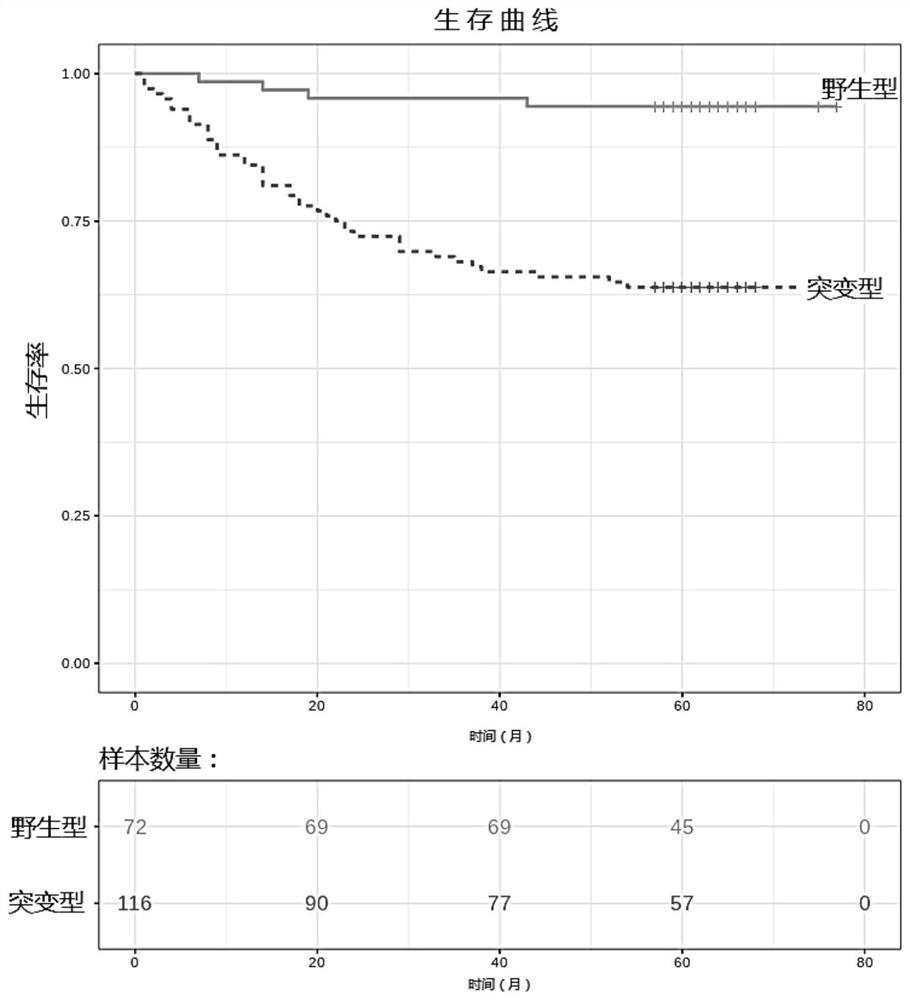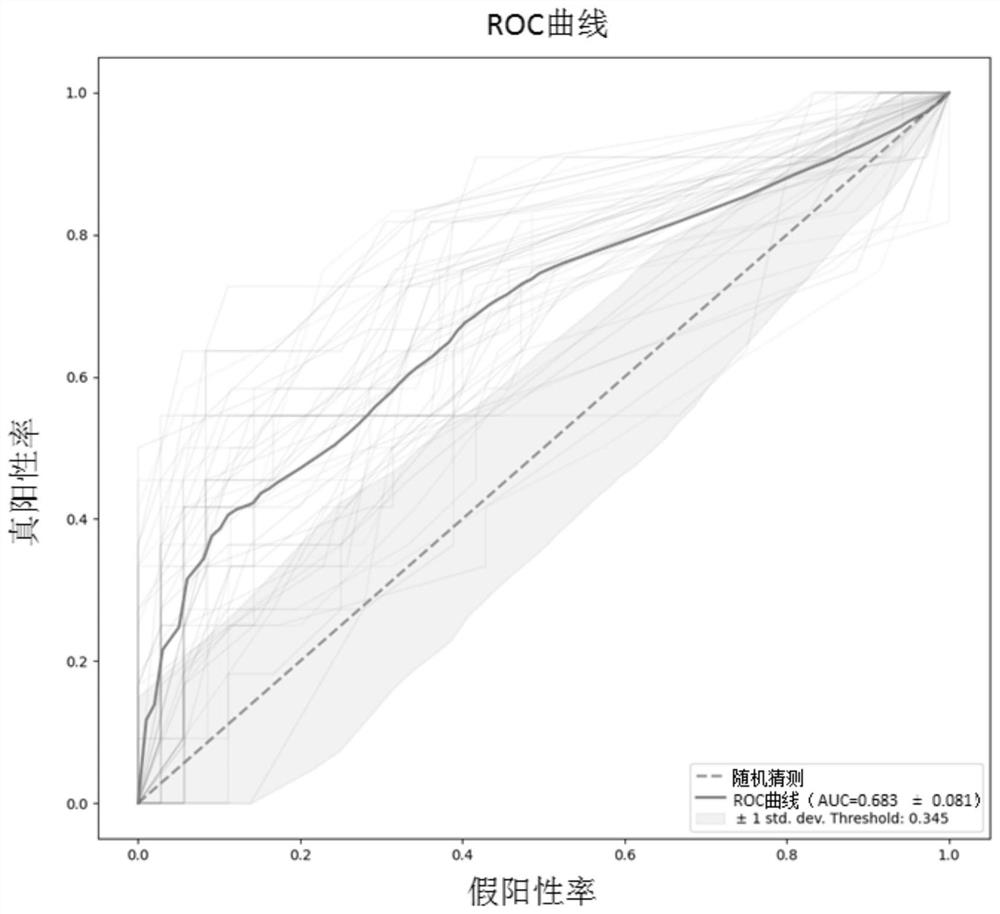A kit for predicting the prognosis risk of squamous cell carcinoma of the lung and its application
A technology of lung squamous cell carcinoma and kit, which is applied in the field of genetic engineering and oncology, can solve the problems of not giving high reliability, etc., and achieve the effect of convenient, fast and high specificity detection
- Summary
- Abstract
- Description
- Claims
- Application Information
AI Technical Summary
Problems solved by technology
Method used
Image
Examples
Embodiment 1
[0053] This embodiment provides a kit for predicting the prognostic risk of lung squamous cell carcinoma, which includes reagents for detecting target regions. Wherein, the target region includes regions 1 to 127, and for specific information of the target region, please refer to Table 1. The reagents include probes 1-288, and the sequences of the probes 1-288 are shown in SEQ ID No.1-288 in sequence, please refer to Table 2 for details.
[0054] Table 2 Probes
[0055]
[0056]
[0057]
[0058]
[0059]
[0060]
[0061]
[0062]
[0063]
[0064]
[0065]
[0066]
[0067]
[0068]
[0069]
[0070]
[0071]
[0072]
[0073]
[0074]
[0075]
[0076]
[0077]
[0078]
Embodiment 2
[0080] This embodiment provides a method for predicting the prognostic risk of lung squamous cell carcinoma, which includes using the reagents provided in Example 1 to detect the prognostic risk of lung squamous cell carcinoma in nucleic acid samples from patients with lung squamous cell carcinoma.
[0081] In this embodiment, probes 1-288 are used to detect regions 1-127. It should be noted that, in other embodiments, existing high-throughput sequencing methods can be used to detect the target region. After sequencing, perform the following steps: (a) use Fastqc to detect the quality of sequencing data; (b) use TRIMMATIC to remove reads with an average sequencing quality of less than 28, and remove reads (read length) with a length of less than 74bp; (c) use bwa, or with it Equivalent software maps the sequencing results to the reference sequence of the human genome; (d) uses the Data pre-processing process in GATK Best Practices Workflows to obtain the processed BAM files; (...
Embodiment 3
[0084] In this example, 188 lung squamous cell carcinoma patients aged 41-86 were collected, including 71 patients at stage I, 65 at stage II, 50 at stage III, and 2 at stage IV, and determined according to the method provided in Example 2 Whether the patient's tumor tissue carries the sequence information of ARID1A, SLC43A2, ANKS1A, CHD2, RPTOR, OR7A5, RUNX1 gene specific region (region 1-127), the relationship between the sequence information of the target region and the patient's postoperative survival To analyze the relationship among them, please refer to Table 3 for the analysis results.
[0085] Table 3 P value and HR value of genes in different survival analysis methods
[0086] Gene Single factor Log rank analysis Multivariate Cox analysis ARID1A 6.08x10-5 1.40x10-5(4.03) SLC43A2 6.05x10-4 1.93x10-5(4.12) ANKS1A 3.34x10-2 7.64x10-3(3.89) CHD2 1.08x10-3 1.30x10-3(2.89) RPTOR 2.98x10-3 1.66x10-3(2.99) OR7A5 4.41x10-5 ...
PUM
 Login to View More
Login to View More Abstract
Description
Claims
Application Information
 Login to View More
Login to View More - R&D
- Intellectual Property
- Life Sciences
- Materials
- Tech Scout
- Unparalleled Data Quality
- Higher Quality Content
- 60% Fewer Hallucinations
Browse by: Latest US Patents, China's latest patents, Technical Efficacy Thesaurus, Application Domain, Technology Topic, Popular Technical Reports.
© 2025 PatSnap. All rights reserved.Legal|Privacy policy|Modern Slavery Act Transparency Statement|Sitemap|About US| Contact US: help@patsnap.com



